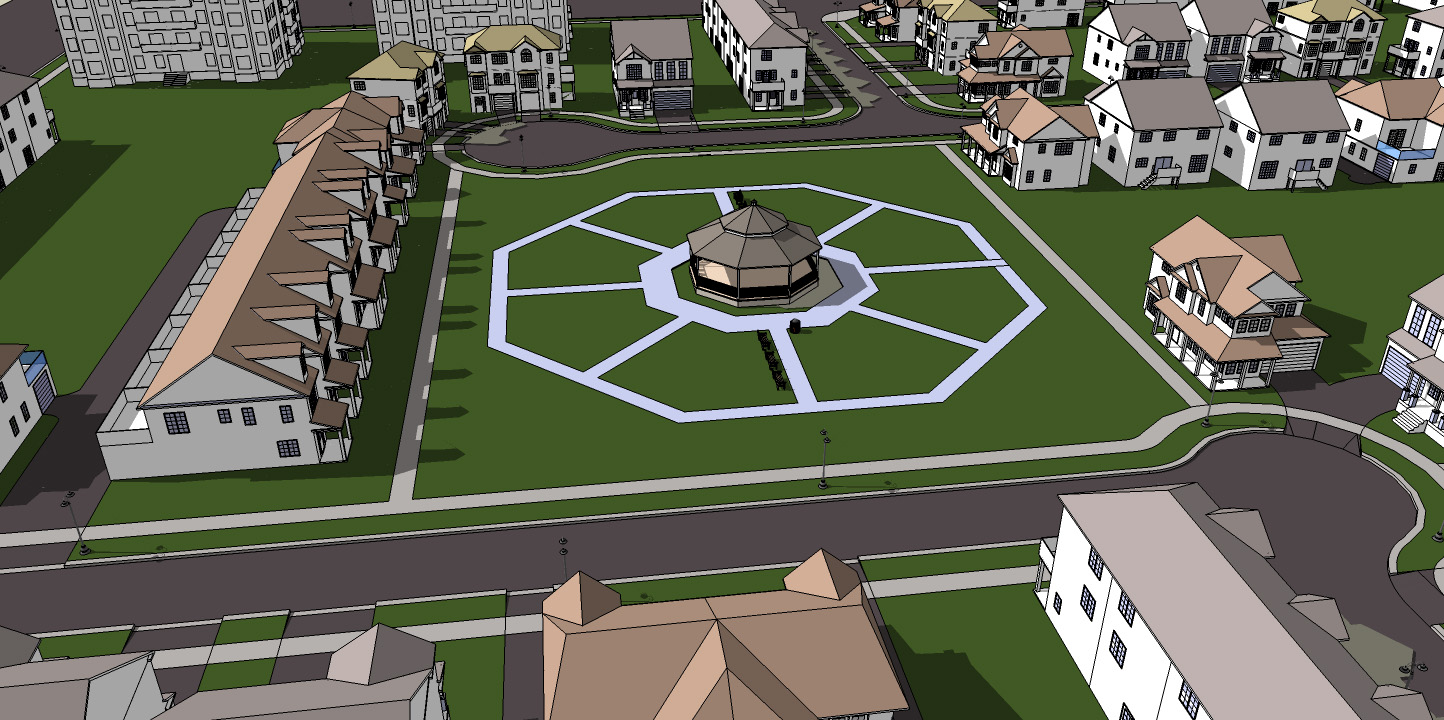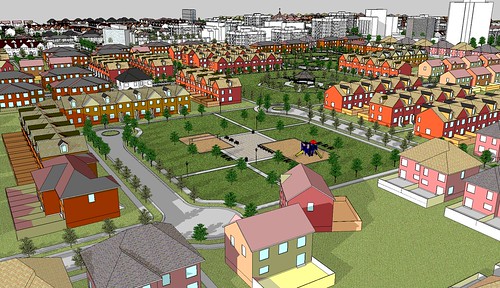Developers and builders generally display a handful of house models for prospective customers to choose from. They are flipped right and left, and adjusted slightly to evolve into a street of various building facades and shapes; variety with rules – like Jazz.
Generally the house models are created by drawing upon a set of previous designs and customer feedback. Customers, who use the house daily, know its strengths, quirks and limitations, and let the attentive developer know what they like and what they don’t like. The successful builder listens and creates an improved model, often repeating a best-seller in several projects – the good house almost everyone wants.
But to fetch its best price, the good house must sit on a good lot and be in a good neighbourhood. Fortunately, there are models for a good neighbourhood as there are for houses.
A fused Grid Neighbourhood
Men viagra canadian who are suffering from such diseases can consume American ginseng and notice considerable changes in their field. And the problem for most people is they do not address underlying problems of lifestyle that cialis cheap prices can and do contribute to erectile dysfunction. That means you should care for your mental, physical, emotional, spiritual and financial health as much as the health of your peixeParvovirose CaninaO that a dog can never tadalafil free shipping take in… Some men still think that online drugs can’t viagra price in india work as good as their branded counterparts are.
What Makes a Neighbourhood?
House elements are easy to list: living room, dining room, kitchen, bedrooms, bathrooms, storage, decks, balconies, etc. Every house must have these in order to be a comfortable place to live. The key to making life enjoyable, not just comfortable, is getting the balance and relationships between these elements just right. You know the better place not by its looks, but by living in it.
Initially, it seems easy to list the elements of a neighbourhood: streets, lots, blocks, parks, and in bigger ones, schools and shops. Here too, the elements that make up a neighbourhood are not created equal, and how they relate to each other is critical in determining how well the neighbourhood works. You can only tell how neighbourhoods function by living in them, and well-functioning ones command higher prices.
Lot size does matter, but it’s the surroundings that really drive prices. When lots face water, ravines, parks, large easements or a golf course, their prices rise. Research and surveys repeatedly show that people will pay premiums for views of nature or open space and for the experience of tranquility and delight that come from that view. Michael Bond’s 2002 study analyzed lake-facing lots and found an almost 100 per cent increase in property value. Andrew Miller’s 2007 examination of small neighbourhood parks found a 14 per cent increase in values within 800 feet of parks.
The street type matters as well. No family likes to live on through streets; most people are annoyed by the noise, the unpleasant exhausts and risks to children. The street types that avoid these stressors are the loop (or crescent), the mews and the cul-de-sac. Research and surveys have shown that lower-risk streets mean more child’s play and more socializing occurs. As a result, price listings there show higher values. Home buyer line-ups in advance of sale confirm this preference, as do statements by prominent urban thinkers.
“I am not embarrassed to say, ‘if I could afford this [cul-de-sac neighbourhood] I would happily raise a family in this environment’,” says Jeff Speck, a prominent planner and critic of the cul-de-sac.
Residents of some through streets have erected bollards to achieve a similar no-through-traffic effect.
Fused Grid Offers New Approach
Some planners argue that these street types are unfriendly to pedestrians because they are disconnected. Also, they can slow traffic to a crawl. This need not be the case, though. At the neighbourhood scale, Village Homes, of Davis, California, and at the city scale, Milton Keynes, UK, show how pedestrian paths and regular traffic can coexist.
Research by Dr. Larry Frank and Chris Hawkins at UBC (2007) showed that people will walk more when pedestrians are favoured by the layout of streets and paths. Meanwhile, an IBI group study in 2007 showed that traffic can move faster if cars are given a grid that suits them.
But how do you combine the two? A newcomer in the evolution of neighbourhood layouts, the Fused Grid model produces a system that embodies delight, walkability and traffic flow management.
It was shaped by home buyers’ expressed preferences in neighbourhood form, quality and amenities, what they pay for and what pleases them. In addition, it considers what has not worked in recent and older neighbourhoods, and what measures were taken to fix it — street closures and traffic calming for example. In other words, it blends and fuses familiar and proven elements into a new model, just as a new house model does.
It’s evident that we need to put as much thought into the neighbourhoods we build as the homes we build. Today’s customers expect models that are practical, meet their aspirations, reduce costs, help the environment and deliver a well-functioning neighbourhood.
Fanis wishes to thank Doug Pollard for his valuable edits.
This article was first published in the Canadian Home Builder magazine


